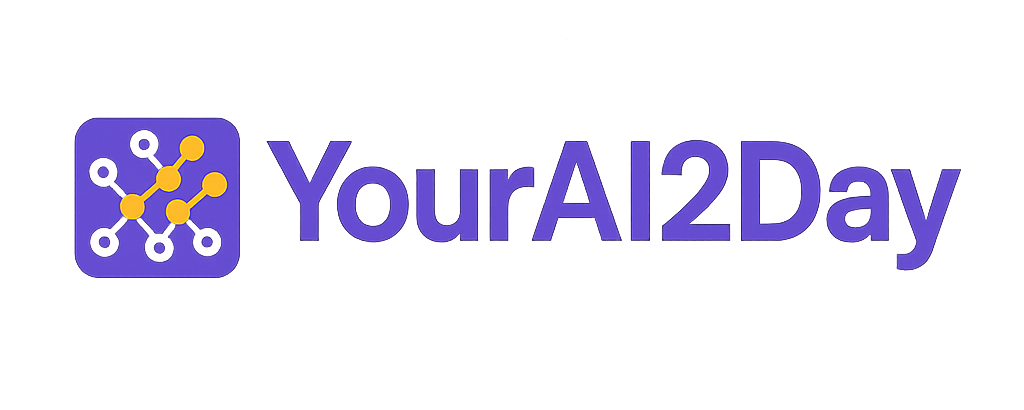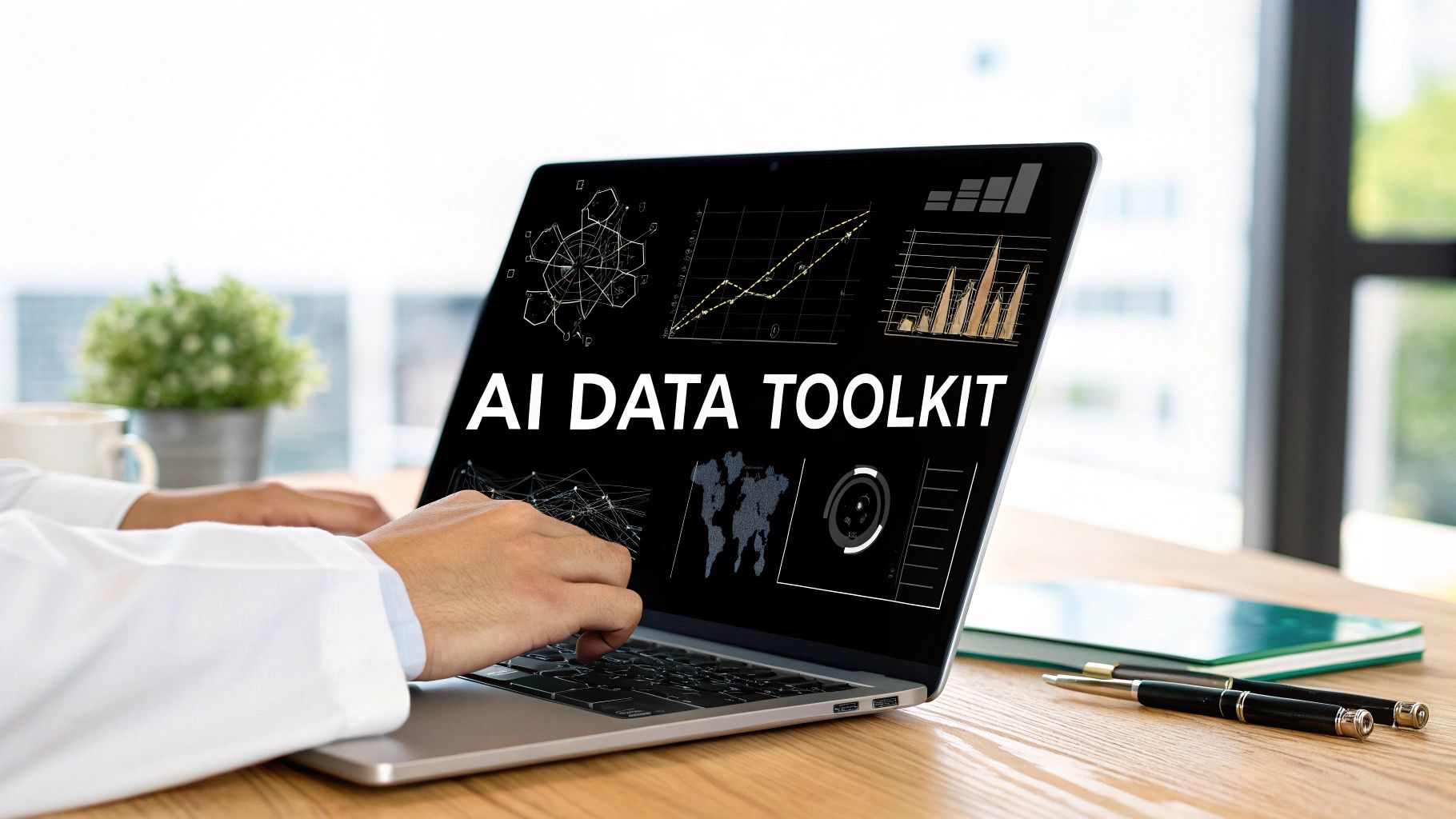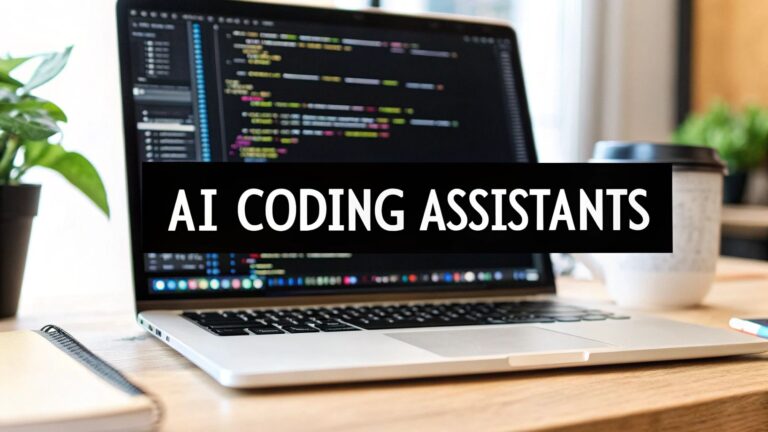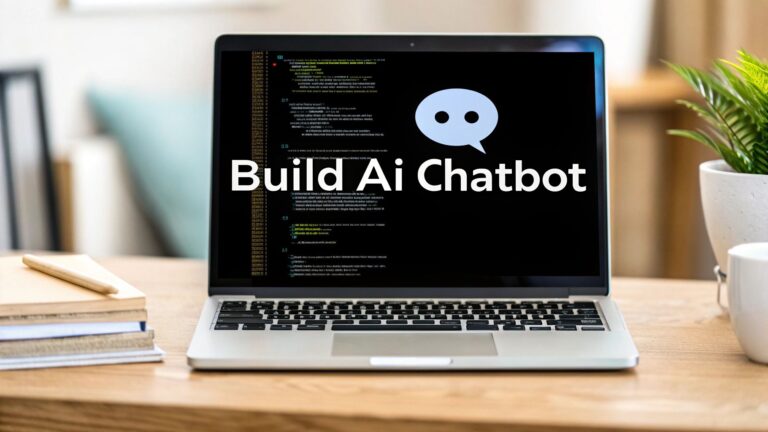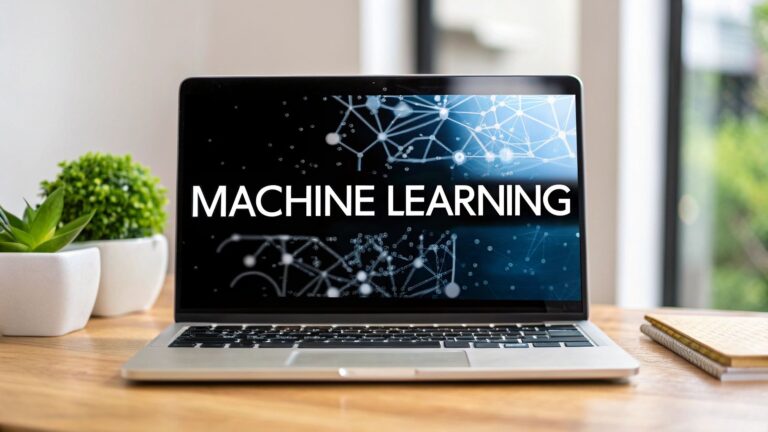12 Best AI Data Analysis Tools for Beginners in 2025
Hey there! Got a mountain of data but not sure how to turn it into gold? You're not alone. The good news is, a new wave of ai data analysis tools is here to help, and you don't need a Ph.D. in data science to use them. Many of these platforms are built for beginners and business folks who just need clear answers, not complicated code.
This guide is your friendly, no-fluff walkthrough of the best AI-powered platforms out there today. We’ll skip the marketing jargon and give you an honest look at what each tool does best. Whether you're trying to figure out how much inventory to order, understand why customers are leaving, or just make sense of a massive spreadsheet, we'll help you find the right tool for the job.
Inside, you’ll find a detailed breakdown of 12 top-tier tools, from big enterprise platforms like Google's Vertex AI to super accessible options like ChatGPT's Advanced Data Analysis. For each one, we'll cover:
- A simple overview of what it does.
- Practical examples of how you might use it.
- An honest look at its pros and cons.
- Key features with screenshots and direct links.
We've designed this to be easy to scan so you can compare your options quickly and feel confident in your choice. Let's dive in and find the perfect tool to turn your raw data into your most powerful secret weapon.
1. AWS Marketplace – Machine Learning
If your team is already using Amazon Web Services, the AWS Marketplace for Machine Learning is less of a single tool and more like a giant superstore. It’s a digital catalog where you can find, buy, and instantly use a huge variety of third-party ai data analysis tools right inside your AWS account. Think of it as an app store just for machine learning, offering everything from ready-to-go models for analyzing customer feedback to complete platforms from big-name vendors.
Its main strength is how easy it makes everything. For example, you could find a special algorithm for predicting when your factory equipment might fail, and with just a few clicks, have it running. All the billing gets rolled into your regular AWS bill, which your accounting team will love. As data science expert Dr. Alistair Finch notes, "Platforms like AWS Marketplace democratize access. A small e-commerce business can deploy the same sophisticated fraud detection model as a major bank, dramatically leveling the playing field." This one-click setup slashes the time and tech skills needed to start using powerful AI.
Key Features & Considerations
- Pros:
- Fast Procurement: Instantly access and deploy tools using your existing AWS account.
- Vast Selection: A huge library of algorithms, models, and full platforms from various vendors.
- Seamless Integration: Designed to work perfectly with AWS services like SageMaker.
- Cons:
- Complex Pricing: Costs vary widely by vendor and usage, making direct comparisons difficult.
- Vendor Lock-in: Solutions are heavily optimized for the AWS ecosystem, which can make migrating away challenging.
Website: AWS Marketplace – Machine Learning
2. Microsoft Azure Machine Learning
For companies that run on Microsoft, Azure Machine Learning is the all-in-one workshop for building, training, and deploying AI models. It’s not just one service but a complete workbench designed to handle the entire machine learning journey. It’s great at helping data scientists and IT folks work together, making it easier to automate and manage AI models. This makes it a really powerful choice among ai data analysis tools for big, serious business projects.
The platform is super flexible. It has a no-code drag-and-drop designer for beginners, a coding environment for experts, and an automated option for quick experiments. A practical example would be a retail company using the no-code designer to build a model that predicts which customers are likely to churn based on their purchase history. The big win is how well it connects with other Azure services like Power BI, creating a smooth path from raw data to beautiful, insightful dashboards all within the Microsoft world. If you want to get a better handle on the basics, you can explore deep learning vs. machine learning here.
Key Features & Considerations
- Pros:
- Integrated Ecosystem: Works seamlessly with Azure Databricks, Synapse, and Fabric.
- Strong Security: Tight identity and access control through Azure Active Directory (AAD) and RBAC.
- Pay-as-you-go: The service itself has no extra cost; you only pay for the underlying compute and storage you use.
- Cons:
- Complex Pricing: Costs are spread across multiple services, requiring careful monitoring to manage budgets.
- Azure-Centric: Best suited for teams already invested in the Microsoft Azure ecosystem.
Website: Microsoft Azure Machine Learning
3. Google Cloud Vertex AI
If your organization is all-in on Google Cloud, Vertex AI is your command center for machine learning. It's a unified platform that pulls together all of Google's AI tools into one simplified workflow. Instead of juggling different services, Vertex AI gives you a single place to prep data, build models (either with automation or custom code), and launch them. This makes it one of the most streamlined ai data analysis tools for projects from start to finish.
The platform's real superpower is its connection to other Google services and its powerful hardware. It hooks up perfectly with BigQuery, so moving massive datasets around is a breeze. For the heavy lifting, it gives you easy access to powerful GPUs and Google’s own specialized TPUs, which can train your AI models way faster. Imagine you're a gaming company trying to predict player behavior. With Vertex AI, you can pull terabytes of gameplay data from BigQuery, train a model on TPUs in a fraction of the time, and deploy it to personalize in-game offers, all in one place.
Key Features & Considerations
- Pros:
- Strong Hardware Support: Excellent access to and management of GPUs and TPUs for demanding training jobs.
- Transparent Pricing: You pay for the specific resources you use, like training hours or prediction requests, offering granular cost control.
- Scales Effortlessly: Built on Google's infrastructure, it handles scaling automatically without manual intervention.
- Cons:
- Complex Pricing Matrix: The fine-grained pricing can be overwhelming for newcomers to navigate and forecast.
- Ecosystem Centric: While powerful, it is heavily optimized for Google Cloud, which might not suit multi-cloud strategies.
Website: Google Cloud Vertex AI
4. Databricks (Data Intelligence Platform)
For businesses that want one place for all their data work—from engineering to analytics to machine learning—Databricks offers a "lakehouse" platform. It cleverly combines the massive, affordable storage of a data lake with the speed and structure of a data warehouse. This means your whole team can work from a single copy of the data for everything, whether they're building data pipelines or training sophisticated ai data analysis tools and models.
The platform’s strength is how it encourages teamwork and uses popular open-source tools like Apache Spark. Data scientists and engineers can collaborate in shared digital notebooks, track their experiments, and launch models right from the platform. "The collaborative nature of Databricks is its killer feature," says lead data engineer Maria Flores. "My engineers can prep the data, and our analysts can immediately build models on it in the same notebook. It cuts our project timelines in half." This smooth workflow is a huge advantage when implementing AI in business, as it removes the friction between getting data and using it to make smart decisions.
Key Features & Considerations
- Pros:
- Unified Platform: A single environment for ETL, analytics, and machine learning.
- Open-Source Alignment: Built on popular open-source projects like Spark and MLflow.
- Enterprise-Ready: Strong governance, security, and cross-cloud availability.
- Cons:
- Complex Pricing: Costs are based on Databricks Units (DBUs) and underlying cloud provider fees, which can be difficult to predict.
- Tiered Features: Some advanced capabilities, like vector search, may require premium plan access.
Website: Databricks Pricing
5. Snowflake – Cortex AI
If your company's data already lives in Snowflake, Cortex AI is like adding a turbocharger to your engine. It isn't a separate tool; it's a set of AI services built right into the Snowflake Data Cloud. This lets you use powerful machine learning on your data without ever having to move it, which is a huge win for security and simplicity. This makes it one of the safest and most efficient ai data analysis tools for companies that want to use their own private data to predict trends, summarize text, or create smarter search features.
The real magic of Cortex is how simple it is. An analyst can ask complex questions in plain English, and developers can use powerful AI models with simple SQL commands. For example, a marketing analyst could run a sentiment analysis on millions of customer reviews with a single line of SQL, right where the data is stored. They could type something like SELECT SNOWFLAKE.CORTEX.SENTIMENT('en', review_text) FROM customer_feedback; and instantly see which reviews are positive or negative. This accessibility removes the need for separate AI systems, making it way easier for companies to start building smart, data-driven apps.
Key Features & Considerations
- Pros:
- Minimal Data Movement: Enhances security and governance by processing data directly within Snowflake.
- Unified Billing: Costs are integrated into your existing Snowflake bill and paid with credits.
- Centralized Management: Provides a single view for cost and usage monitoring across data and AI workloads.
- Cons:
- Requires Snowflake Account: Only accessible to existing Snowflake customers, creating a vendor dependency.
- Complex Cost Structure: While billing is unified, per-feature credit rates vary, and standard warehouse compute charges still apply.
Website: Snowflake – Cortex AI
6. IBM watsonx.ai
IBM watsonx.ai is a serious AI studio for big companies that want to build, tweak, and deploy both classic machine learning and the latest generative AI apps. It stands out by offering a secure and governed environment where teams can work together on everything from cleaning data to launching powerful AI models. The platform is super flexible, letting you use models from IBM's catalog, from other companies, or even bring your own.
Its main strength is mixing powerful tech with a strong focus on rules and governance. This makes it one of the best business-ready ai data analysis tools for companies in regulated industries like finance or healthcare. For instance, a bank could use watsonx.ai to build a chatbot that answers customer questions using the bank's internal knowledge base, with full audit trails to ensure compliance. The pricing model, which starts with a free plan and scales up based on usage, lets teams start small and grow, giving them a clear path from a small experiment to a full-blown production system.
Key Features & Considerations
- Pros:
- Focus on Governance: Built-in tools for AI lifecycle governance and compliance.
- Flexible Deployment: Wide range of deployment options, including on-demand hosting.
- Clear Pricing Tiers: Transparent plans, including a free tier to get started.
- Cons:
- Cost Estimation: Token-based pricing for different models requires careful cost planning.
- Plan Limitations: Advanced features are often tied to higher-tier, paid plans.
Website: IBM watsonx.ai
7. DataRobot AI Platform
For businesses looking for one unified, enterprise-level solution, the DataRobot AI Platform provides a complete environment for the entire AI journey. It goes beyond just building models by combining automated machine learning (AutoML) with tools for building Generative AI apps and managing them in production. This makes it one of the most complete ai data analysis tools for teams that need to deploy, monitor, and govern their models at a large scale.
The platform's key advantage is that it handles everything from start to finish. Imagine you're building a complex forecast to predict sales for the next year. DataRobot not only automates the creation of the model but also keeps track of it, monitors its performance to see if it's getting less accurate over time, and helps you retrain it. This all-in-one approach cuts down on the manual work needed to keep AI systems running, making it a powerful choice for important, business-critical applications.
Key Features & Considerations
- Pros:
- Comprehensive Lifecycle: Manages everything from data to deployment and monitoring.
- Multiple Deployment Options: Available as a managed SaaS, in a private cloud, or via major cloud marketplaces.
- Free Trial: Offers a 14-day self-service trial for hands-on evaluation.
- Cons:
- Limited Public Pricing: Cost details typically require direct engagement with their sales team.
- Tiered Features: Access to advanced capabilities is dependent on the specific license edition.
Website: DataRobot AI Platform
8. Alteryx (Analytics Cloud + Designer)
Alteryx is all about making data science easy with a low-code approach, putting powerful ai data analysis tools into the hands of business analysts and everyday data users. It lets you build complicated data workflows using a simple drag-and-drop interface. This visual canvas lets you see your entire data pipeline from start to finish, which is a huge help when you're trying to figure out what's going on or explain it to someone else.
The platform really shines by combining its powerful desktop tool with a collaborative cloud platform. This gives you flexibility, letting you build on your own computer and then scale up in the cloud. New features like the AI Copilot even suggest what you should do next in your workflow, helping to bridge the gap between basic data analysis and true AI automation for businesses. For example, after you connect your sales data, the AI Copilot might suggest, "Looks like you have dates. Want to analyze sales by month?" This guidance is invaluable for beginners. Its clear pricing for the starter cloud version also makes it a great choice for smaller teams.
Key Features & Considerations
- Pros:
- Approachable Low-Code: Empowers non-coders to perform complex data prep and analysis.
- Flexible Deployment: Offers both cloud and desktop options to suit different security and scalability needs.
- Transparent Entry Pricing: Clear pricing for its cloud Starter Edition helps small teams get on board.
- Cons:
- Sales-Gated Advanced Tiers: Pricing for more advanced editions requires direct contact with their sales team.
- Needs Integration for MLOps: It’s a powerful analytics tool but may require integration with other platforms for full-cycle machine learning operations.
Website: Alteryx (Analytics Cloud + Designer)
9. KNIME
KNIME is a champion of making data science accessible to everyone with its open-source, low-code/no-code visual workflow editor. It's a surprisingly powerful platform that lets you build, test, and deploy everything from simple data cleaning tasks to complex machine learning models just by dragging and dropping blocks. For beginners or analysts who don't code, this visual approach makes advanced ai data analysis tools and techniques much easier to grasp. You can literally see your process, connecting blocks for data input, transformation, and AI models to create a clear, repeatable workflow.
The platform's magic is in its flexibility. You can build entire projects without writing a single line of code, but it also works perfectly with Python and R for those who want to add custom scripts. The free desktop version is incredibly capable for individuals, while the paid plans add features for teamwork, automation, and governance, so you can scale your AI solutions across the whole company. It’s a fantastic tool whether you're just learning or building enterprise-grade systems.
Key Features & Considerations
- Pros:
- Robust Free Tool: The free desktop version is remarkably powerful for data analysis and ML.
- Visual & Code Integration: Appeals to both non-coders and developers with its hybrid approach.
- Scalable Tiers: Offers affordable professional and enterprise-grade hub options for growth.
- Cons:
- Usage-Based Costs: Automation beyond the included credits is billed by usage, which can be unpredictable.
- Enterprise Pricing: The Business Hub licensing starts at higher price points for enterprise deployment.
Website: KNIME
10. Altair RapidMiner (Altair AI Studio/AI Hub)
Altair RapidMiner is a powerful low-code data science platform designed to help users of all skill levels, from business analysts to expert data scientists. It provides a visual, drag-and-drop environment that simplifies the entire data science process, from preparing data and building models to getting them up and running. This approach makes it one of the most accessible yet complete ai data analysis tools for teams looking to build and manage predictive models without needing to be coding wizards.
The platform is divided into parts like the AI Studio for building workflows and the AI Hub for teamwork, governance, and running models at a large scale. Its strength lies in making data science available to everyone. An analyst could use the AutoML feature to quickly generate a solid model for predicting customer churn, while a data scientist can dive deep and tweak the algorithms. As a consumer AI advocate, I love this approach because it empowers the people who know the business best to ask questions of their data directly. This flexibility, along with various deployment options, makes it a versatile choice for companies at different stages of their AI journey.
Key Features & Considerations
- Pros:
- Highly Accessible: The visual, drag-and-drop interface is easy for non-programmers to learn and use.
- Flexible Deployment: Offers cloud, on-premises, and AWS Marketplace options to fit various IT infrastructures.
- Generous Free Access: Provides free versions for academic and non-commercial use, perfect for learning.
- Cons:
- Opaque Enterprise Pricing: Commercial licenses require direct contact for quotes and contract negotiation.
- Potential Complexity: Building highly advanced or custom AI applications may require additional platform components.
Website: Altair RapidMiner
11. Hugging Face
While it's famous as the "GitHub for machine learning models," Hugging Face is also a super important platform for getting ai data analysis tools into the real world. It's an open-source hub where you can find, train, and deploy the latest models for tasks like summarizing long documents, analyzing customer sentiment, or pulling specific information out of text. For data analysts, it's a goldmine of pre-trained models that can be fine-tuned on your own data and quickly put to work.
The platform really shines with its "Inference Endpoints" and "Spaces" features, which make the tricky process of deploying a model much, much simpler. With just one click, you can take a powerful language model from the hub and get it running on dedicated hardware that scales automatically. For example, you could grab a model that categorizes support tickets, fine-tune it with your company's data, and deploy it as a live API in under an hour. This makes it way easier for teams to add sophisticated AI analysis to their workflows without needing to be experts in server management.
Key Features & Considerations
- Pros:
- Fast Development to Production: One-click deployment drastically shortens the path from model to live endpoint.
- Massive Open-Source Ecosystem: Unparalleled access to a community-driven library of models and datasets.
- Transparent Pricing: Clear, minute-level compute pricing lets you manage costs effectively.
- Cons:
- Requires Application Logic: It provides the model endpoint, but you must build the surrounding analytics application.
- Cost Optimization Needed: Endpoint pricing is tied to instance uptime, requiring careful management of scaling to control costs.
Website: Hugging Face
12. OpenAI – ChatGPT (with Advanced Data Analysis)
While most people know it as a chatbot, ChatGPT—especially its Advanced Data Analysis feature—has become one of the most approachable ai data analysis tools around. It lets you upload files like CSVs or Excel spreadsheets right into the chat and then ask for summaries, charts, and complex analysis using plain English. It turns data exploration from a technical chore into a simple conversation.
Its biggest advantage is that there's zero setup. It’s perfect for quick, one-off analyses. A marketing manager, for example, could upload a sales report and just ask, "What were our top-performing products this quarter, and can you make me a bar chart?" ChatGPT will then write and run the Python code to process the file, create the chart, and give a written summary of what it found, all in seconds. This is a game-changer for non-technical users who want to get answers from their data without having to learn code.
Key Features & Considerations
- Pros:
- Extremely fast, no-setup analysis: Ideal for individuals and small teams needing quick insights.
- Great UX: The conversational interface and desktop app make data exploration intuitive.
- Governance and privacy features: Business and Enterprise plans offer enhanced data control and security.
- Cons:
- Resource limitations: Usage caps and session limits can vary, potentially interrupting larger analyses.
- Not a full data platform: Lacks the robust governance and integration features of enterprise-grade BI tools.
Website: OpenAI – ChatGPT
AI Data Analysis Tools Feature Comparison
| Platform | Core Features ✨ | User Experience ★★★★☆ | Value Proposition 💰 | Target Audience 👥 | Unique Selling Points 🏆 | Price Points 💰 |
|---|---|---|---|---|---|---|
| AWS Marketplace – Machine Learning | Pretrained models, click-to-deploy, broad vendor base | Seamless AWS deployment, SDK/CLI support | Fast procurement, wide options | AWS users, ML developers | Private offers, ML subdomain filters | Pay-as-you-go, variable pricing 💰 |
| Microsoft Azure Machine Learning | Studio UI, MLOps, security integrations | Integrated security, no extra AML service cost | Enterprise-grade, integrated with Azure | Azure users, enterprises | Responsible AI tools, tight security | Pay for compute/storage only 💰 |
| Google Cloud Vertex AI | End-to-end ML pipeline, Generative AI, resource-based pricing | Scales easily, GPU/TPU support | Transparent pricing, BigQuery integration | Cloud users, data scientists | Generative AI services, fine-grained billing | Per-resource transparent pricing 💰 |
| Databricks (Data Intelligence) | Lakehouse, MLflow, collaborative notebooks | Unified data & ML platform | Single platform for analytics & ML | Data engineers, enterprises | Cross-cloud, serverless compute | Pay-as-you-go + DBUs, complex 💰 |
| Snowflake – Cortex AI | LLMs, vector search, AI observability | Minimal data movement, governed data | Pay-per-use via Snowflake credits | Snowflake users, data teams | Native AI inside Snowflake, role-based governance | Credit-based billing 💰 |
| IBM watsonx.ai | Model catalog, fine-tuning, token usage | Flexible studio, governance focus | Multiple pricing tiers, compliance focus | Enterprises, regulated sectors | LoRA/QLoRA fine-tuning, RAG capabilities | Tiered: Free to Standard 💰 |
| DataRobot AI Platform | AutoML, GenAI apps, lifecycle & governance | Comprehensive MLOps tooling | Multiple deployment options | Enterprises, AI teams | MLOps & monitoring, cloud marketplace presence | License-based, sales required 💰 |
| Alteryx (Analytics Cloud) | Low-code data prep, AI Copilot | Easy drag-and-drop, automated insights | Transparent entry-level pricing | Analysts, small-medium businesses | AI Copilot, flexible deployment | Starter & above plans 💰 |
| KNIME | Open-source workflows, 300+ connectors | Free desktop + paid professional tiers | Affordable tiers, enterprise options | Analysts, teams, enterprises | Visual workflows, Business Hub | Free + Pro/Team/Enterprise tiers 💰 |
| Altair RapidMiner | Low-code with AutoML, AI Hub | Analyst-friendly, multiple deployments | Academic & free non-commercial editions | Analysts, academics, enterprises | AWS marketplace AMIs, collaboration Hub | Custom quotes, enterprise pricing 💰 |
| Hugging Face | Model hub, Inference Endpoints, autoscaling | Fast deployment, open-source ecosystem | Transparent compute pricing | Developers, researchers | Huge open-source community, Spaces hosting | Minute-level compute pricing 💰 |
| OpenAI – ChatGPT (Advanced Data Analysis) | File/code tools, Python exec, visualization | Extremely fast, easy UX | No-setup data analysis | Individuals, SMBs | Built-in code & visualization, business controls | Tiered plans, session limits 💰 |
Making Your Choice: Which AI Tool is Right for You?
Okay, we've covered a lot of ground, from the massive, all-in-one worlds of AWS, Azure, and Google to the super-friendly and specialized platforms like ChatGPT and KNIME. It can feel like a lot to take in, but here's the main takeaway: the "perfect" tool doesn't exist. The right tool is the one that fits your situation, your skills, and what you're trying to achieve.
The journey from having a pile of data to having real, valuable insights is no longer just for big teams of data scientists. The tools we've looked at make data analysis available to everyone, from a solo entrepreneur to a big department, helping you uncover the stories hidden in your information.
Key Considerations Before You Commit
As you think about your options, don't just go for the tool with the fanciest features. Focus on what will actually help you right now.
- Your Current Tech Stack: If your company is already using a cloud provider like AWS, Microsoft Azure, or Google Cloud, sticking with their AI tools is often the easiest path. It makes billing, security, and connecting everything much simpler.
- Your Team's Skill Level: Be realistic about your team's comfort with code. Platforms like Alteryx and KNIME have visual interfaces that are perfect for analysts who don't code. On the other hand, tools like Databricks or Hugging Face offer the power and flexibility that experienced data scientists need.
- Your Budget and Scale: How much you can spend is a big factor. If you're just starting out, using KNIME's free version or ChatGPT's Advanced Data Analysis is a great way to get your feet wet without any risk. For huge projects where performance and security are critical, investing in a platform like Snowflake or Databricks makes a lot of sense.
Actionable Next Steps on Your AI Journey
The most important thing is to just start. You can read all you want, but you'll only really get it once you start playing with the tools yourself.
- Start Small: Pick one of the more beginner-friendly tools, like KNIME or ChatGPT, and upload a simple, clean dataset that you know well. It could be anything from your personal budget to some public marketing data.
- Ask a Specific Question: Don't just poke around. Have a clear question you want to answer, like "Which of our marketing channels brought in the most valuable customers last quarter?" or "What are the main complaints in our negative customer reviews?"
- Experiment and Iterate: Try out different models, charts, and questions. The goal isn't to build a perfect AI model on your first try. It's to get a feel for how the tool works and how it "thinks" about your data.
Ultimately, the best ai data analysis tools are the ones that feel like a natural extension of your own curiosity. They should empower you not just to find answers, but to ask better, smarter questions. By matching the right tool to your needs, you can turn your data from a boring asset into your most powerful strategic advantage.
Feeling excited but want a guide to help you navigate the ever-changing AI landscape? At YourAI2Day, we specialize in breaking down complex AI topics and tools into clear, actionable insights for professionals and enthusiasts. Visit YourAI2Day to stay ahead of the curve with our latest news, reviews, and tutorials.
